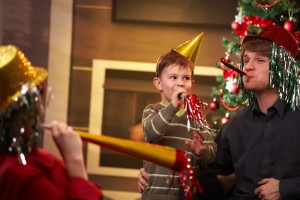PlaySavvy Games
There are so many ways to have fun with your kids and encourage learning at the same time. Some might call it ‘making learning fun’. We call it PlaySavvy.
Here are just a few recommendations for games to play at home.
Teaser Games
What’s My Line?
Arrange some objects in a line. Ask how many there are and count them to check. Then ask if there will be the same number if you start counting from the middle of the line. Many children don’t realize the number doesn’t change regardless of where you start to count.
What’s Next?
The next time you’re reading a book, point to the page numbers. Ask your child to predict the next number when you turn the page. Tough sequences include the teens or turning into a new decade (e.g., from 29 to 30) and from 109 to 110.
I Wish I Had
Grab a few raisins from a bag and count them. Then say: “I have 7 but I wish I had 12.” Your child predicts how many you need; then check by counting. Listen for how they figured it out. Let your child pose the question and you solve it.
Hide and Peek
Together with your child, count out eight or more objects, depending on what’s appropriate around the house. Hide some of the objects under a bowl and keep some of them visible. Ask how many are under the bowl. Listen for how your child figured it out.
Solve the Mystery
This is a calculator game. Enter your mystery number into the calculator; then add an agreed upon number to it (we’ll add five). Show your child the new number and see if they can “solve the mystery” by figuring out the original number. Ask how they know.
Counting Games
Three Blind Dice
Okay, so they’re not blind, but take turns with your child rolling three dice and adding up the totals. Each of you keeps a running total on a calculator. The first one to 50 wins.
Finger Flash
Hold up some fingers for a brief moment and see if your child can tell you how many were there. Begin with one hand. Then move to two hands. Eventually both of you can flash two hands (“1, 2, 3, Go!”) and see who can come up with the combined totals first.
Counting Clutter
Collect some clutter from the floor and ask: “How many do you think there are?” Count to check. Then ask “How many do you think there would be if we counted by 2s? 3s? 5s?” Many children don’t realize that the amount doesn’t change regardless of how it’s counted.
Card Games
Cut the Deck
Take a deck of playing cards (2 to 10) and cut off the numbers so that only the hearts, clubs, spades, or diamonds remain. Play games with your new cards. When you lay down a card, say the number. Without the number symbol to read, your child has to figure out how many.
It’s a Snap!
With your cut-up deck of cards, play “Snap”. You and your child each flip over a card. If there is a match you shout out the number. Whoever says the correct number first gets both cards. A variation on the game is to say “Snap!” whenever the two cards combine to make ten.
I Got More
Divide your cut-up deck between you and your child. Turn over a card. The person with the greater amount takes both cards; if they’re equal, the winner of the next card takes both.
How Much More
A game to play with your cut-up deck. Gather 30–40 raisins as counters. Each player flips over a card. The player whose card is greater wins as many raisins as the difference between the two cards. When the raisins run out, the game is over. Then eat the raisins.
Playing with Numbers
Number Walk
Go on a “Number Walk” and find all the places where there are numbers. As you find a number, say it. Look for something to collect and count how many you find. You can also hunt for a particular number (e.g., 6) or quantity. Play “I Spy with my Math Eye something that is 6.”
Trip to the Library
Go to the library and read some counting books. Good ones include The Very Hungry Caterpillar (Carle), Two Ways to Count to Ten (Dee), and The King’s Commissioners (Friedman). Talk about different combinations that equal ten and notice the different ways we can count ten.
Setting the Table
Ask your child to set the table for your family. If he or she grabs a bunch of forks without counting, ask, “How could you know how many forks you need?” At dinner, “count the table”. How many knives, forks, napkins, plates, etc.
How Much Longer
Look at a calendar and count how many days until a special event. Have your child name the numerals that they see on the calendar.















